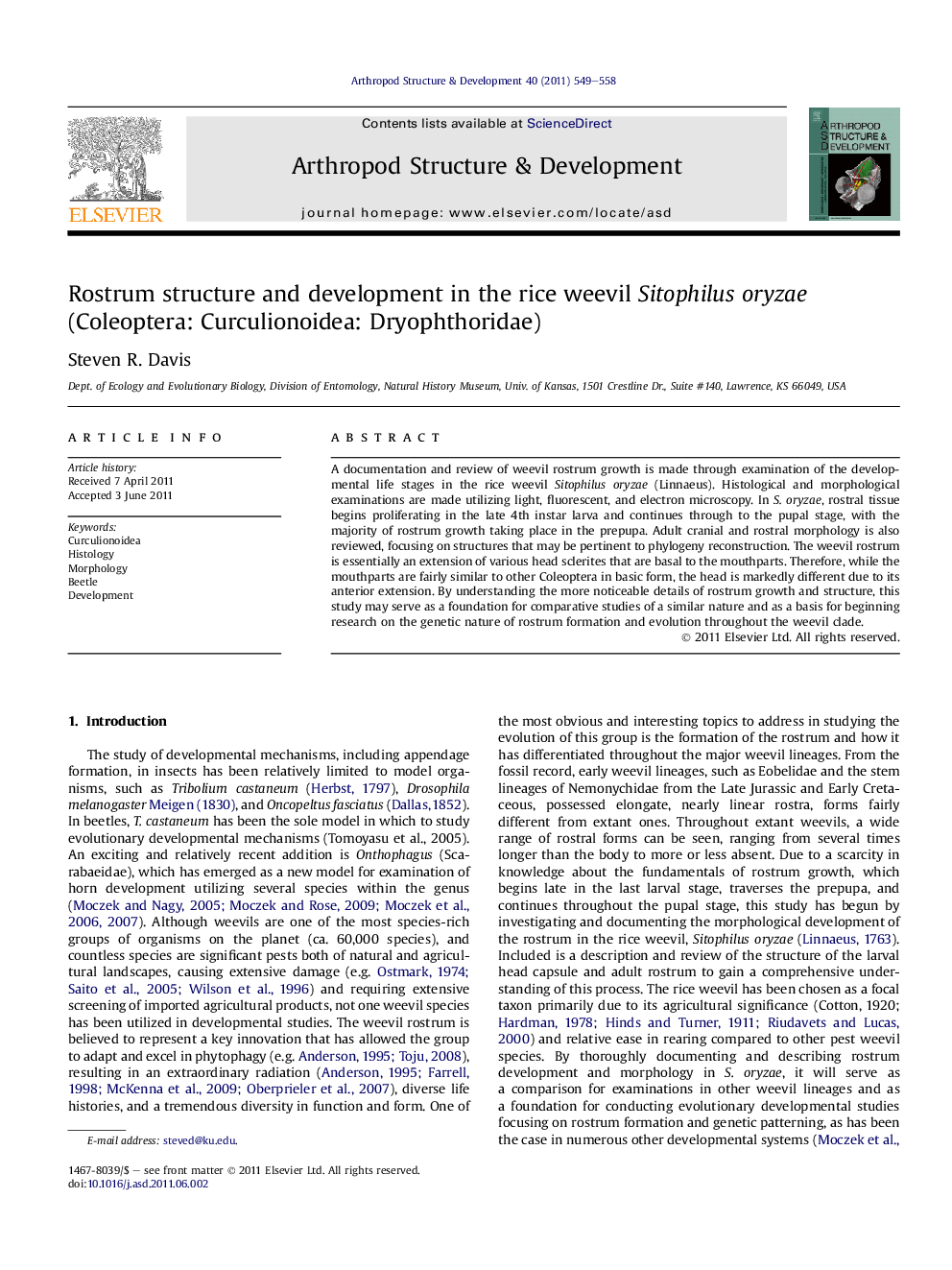| Article ID | Journal | Published Year | Pages | File Type |
|---|---|---|---|---|
| 2778761 | Arthropod Structure & Development | 2011 | 10 Pages |
A documentation and review of weevil rostrum growth is made through examination of the developmental life stages in the rice weevil Sitophilus oryzae (Linnaeus). Histological and morphological examinations are made utilizing light, fluorescent, and electron microscopy. In S. oryzae, rostral tissue begins proliferating in the late 4th instar larva and continues through to the pupal stage, with the majority of rostrum growth taking place in the prepupa. Adult cranial and rostral morphology is also reviewed, focusing on structures that may be pertinent to phylogeny reconstruction. The weevil rostrum is essentially an extension of various head sclerites that are basal to the mouthparts. Therefore, while the mouthparts are fairly similar to other Coleoptera in basic form, the head is markedly different due to its anterior extension. By understanding the more noticeable details of rostrum growth and structure, this study may serve as a foundation for comparative studies of a similar nature and as a basis for beginning research on the genetic nature of rostrum formation and evolution throughout the weevil clade.
► Rostral tissue growth mostly occurs in the 4th larval instar and the prepupa. ► Proliferating rostral tissue becomes compressed and forms numerous folds. ► Hydrostatic pressure and mechanical movements lengthen the pupal rostrum.
